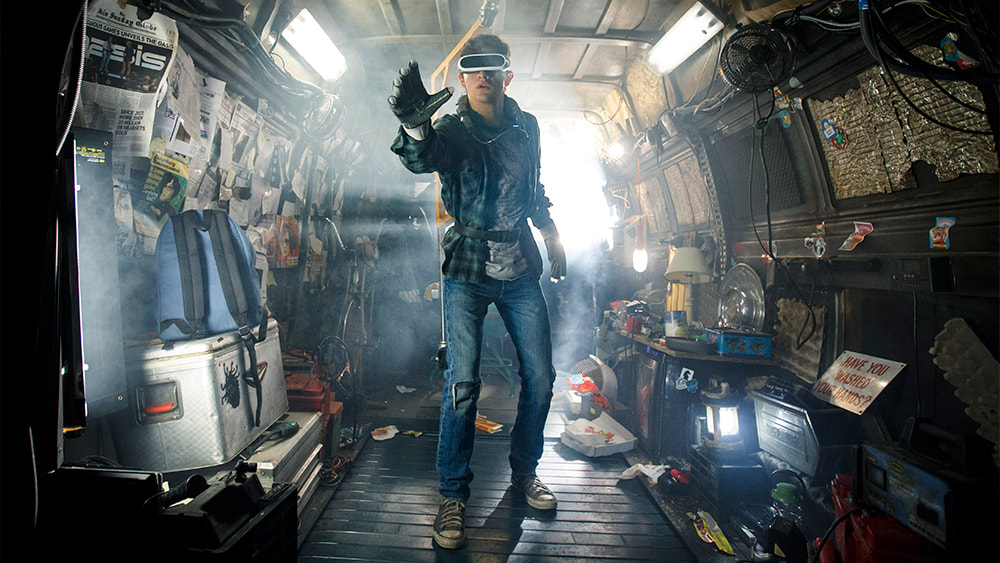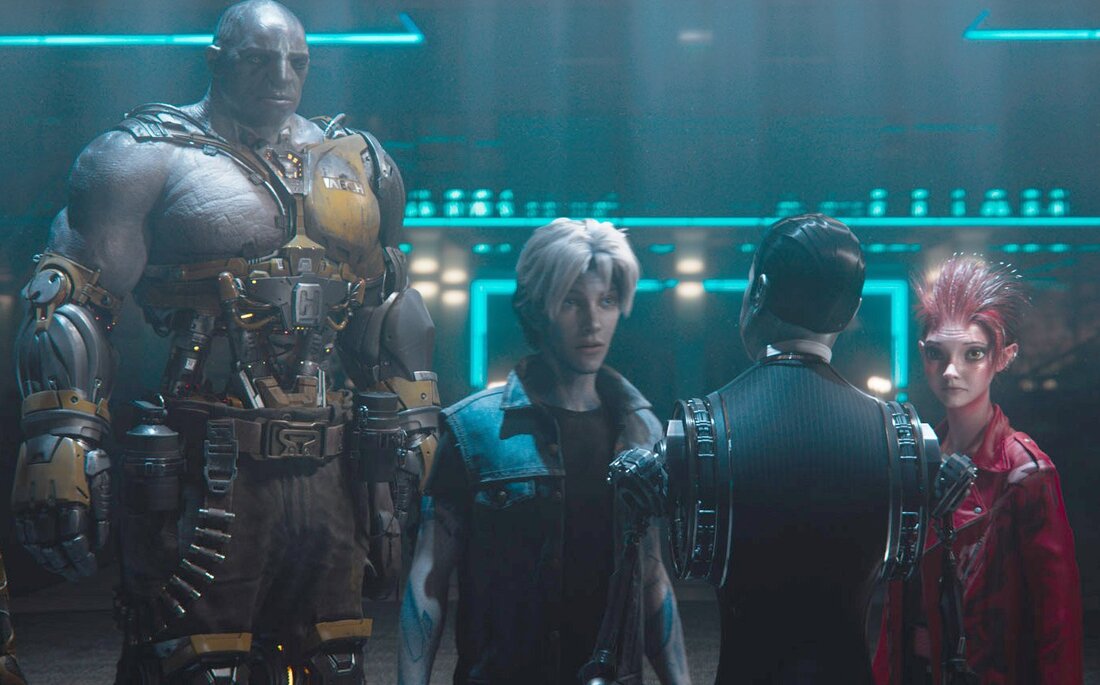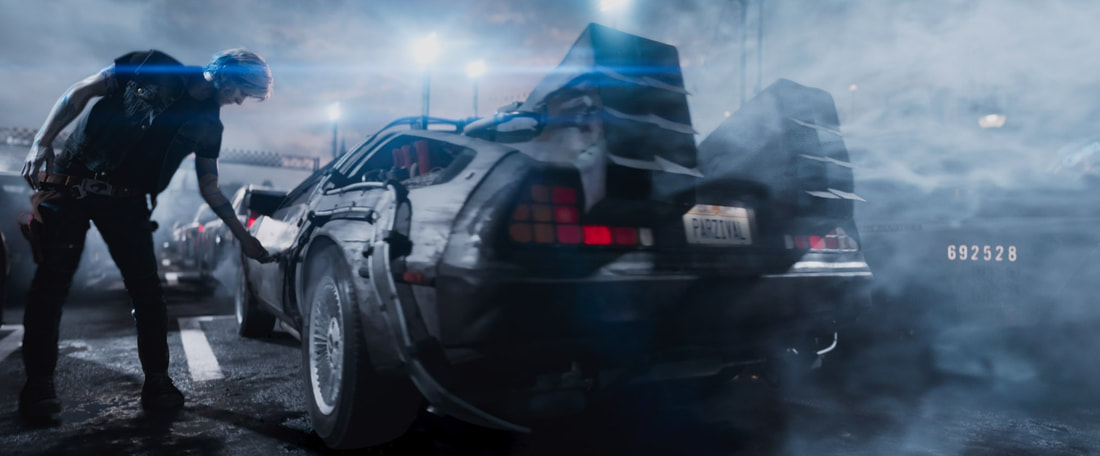Spielberg’s take on Cline’s novel makes some pretty significant changes. For instance, the puzzles and challenges the characters have to solve to find the three keys are almost completely different. Despite this major change, I still found the film to be great, and possibly better than the novel. One thing that both the novel and the film share is the core meaning behind the story.
The year is 2045 and Earth is a wreck. Wade Watts (Tye Sheridan) is a young man living in Columbus, Ohio, now a city of garbage. Wade’s home is in what is called “The Stacks,” which are quite literally, trailers stacked on top of each other creating several story tall, makeshift trailer parks. But life is not bad for Wade, or anyone on this dystopian Earth, because James Halliday’s (Mark Rylance) OASIS is an escape. A utopia where anyone can be who they want to be. Using virtual reality goggles, sensory body suits, and omni-directional treadmills, users can create virtual avatars and enter into the OASIS, seeing and feeling everything as if they were truly there. As we see in this scene from the film, people are heavily invested in their virtual lives.
Caution: some mild language towards the end of the clip.
The most obvious commentary the film discusses is the presence of media in our lives. The OASIS offers people a way to live lives in a completely different world. Players collect money doing challenges and combat, and then can spend that money on items within the OASIS, including items in the real world. We see an example of this when Wade wins the first key challenge and buys several special items and weapons in the game, but also purchases a hi-tech sensory suit that ships to his real world home in The Stacks. We also hear that one of Wade’s guardians spent all of their savings on special equipment in the OASIS in hopes of winning a big combat challenge. Since he lost, Wade’s aunt remarks that their money was supposed to help them move out of The Stacks.
Another big part of the film is that people inside the OASIS do not really know who the other characters are. The characters’ avatars all go by different names. Wade’s avatar is Parzival, and his best friend is Aech (Lena Waithe) but the two have never met in the real world. When Wade develops a romantic interest in another avatar named Art3mis (Olivia Cooke), Aech tells Wade that she could really be a guy called Chuck who lives in his mom’s basement. Online identities are a major component of the OASIS and keeping them a secret becomes very important when IOI, an evil corporation who wants to take over the OASIS, tries to hunt down Wade and his allies.
Similarly, in our own world, we are gaining the ability to live more of our lives online each day. Much like in the OASIS, we can purchase items in a virtual space and they show up at our real homes. We also create online personas of ourselves through such platforms as Facebook and Instagram. With virtual reality headsets becoming more and more popular, it is not an unreasonable idea that someday we might be able to construct something like the OASIS, a virtual space where we can experience another world as if it was a 3D space. We are not quite there yet, but a lot of the problems we see in Ready Player One are active problems in our world today.
According to pewresearch.org, 72% of the public today uses social media of some form, and it is no secret that technology addiction is slowly becoming a real problem. In Ready Player One we see a future where social media or technology addiction has gotten to such a point that the real world is deteriorating because everyone is so involved in the virtual world that they just ignore real life.
What a film like Ready Player One is doing is showing us this world in the future where all pop culture is from a different time. The 80’s pop culture is practically worshipped by the OASIS society, through their avatars, references, and the music that plays throughout the film. The villain of Ready Player One, Nolan Sorrento (Ben Mendelsohn), simply pretends to understand pop culture to get on Wade’s good side and deceive him. Sorrento’s plan is to control the OASIS to make money through advertising and other capitalistic ideas. This idea of nostalgia and capitalism seems reflexive of the state of Hollywood today, where studios push out nostalgia fueled franchises from the past in order to make a buck off of the consumer’s love of the property. Just look at the current state of Star Wars fans, some of whom are angry with Disney for “mishandling” their favorite franchise. Ready Player One does not point these ideas out, but it is something that the film calls into question without needing to say it.
Works Cited:
https://www.pewresearch.org/internet/fact-sheet/social-media/




 RSS Feed
RSS Feed
